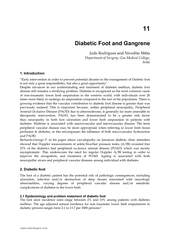PPT-Gangrene By: Dajana, CJ, D’Angelo, Chris
Author : emily | Published Date : 2024-03-15
Date February 92015 Period 2B What is Gangrene Gangrene is a condition that occurs when body tissue dies It is caused by a loss of blood supply due to an underlying
Presentation Embed Code
Download Presentation
Download Presentation The PPT/PDF document "Gangrene By: Dajana, CJ, D’Angelo, Chr..." is the property of its rightful owner. Permission is granted to download and print the materials on this website for personal, non-commercial use only, and to display it on your personal computer provided you do not modify the materials and that you retain all copyright notices contained in the materials. By downloading content from our website, you accept the terms of this agreement.
Gangrene By: Dajana, CJ, D’Angelo, Chris: Transcript
Download Rules Of Document
"Gangrene By: Dajana, CJ, D’Angelo, Chris"The content belongs to its owner. You may download and print it for personal use, without modification, and keep all copyright notices. By downloading, you agree to these terms.
Related Documents














